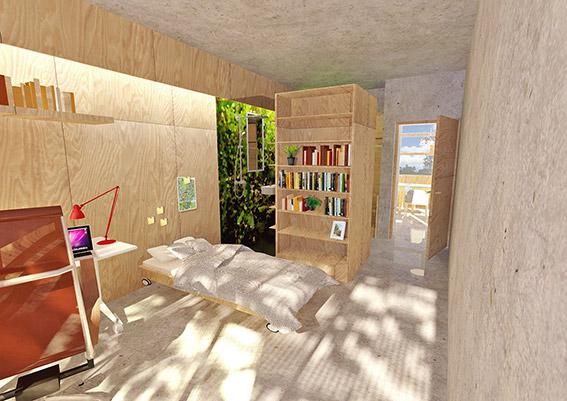The Top 5 Things Developers Need To Know About Student Accommodation
Hamilton Wilson from Wilson Architects shares his insights into the top five things developers need to know about student accommodation.
Students are paying more for their education, and expecting more from their overall university experience, including off-campus living. Well-designed student accommodation that combines ‘living and learning’ meets the needs of students, creates a vibrant hub for students in urban areas, as well as positively contributing to the bottom line:

1. Leverage off the city
Student accommodation in urban and suburban areas should provide a range of really flexible group spaces. Developers should understand that students need spaces where they can participate in the intensity of study, and spaces where they can relax. Whether that’s physical or reflective – they need a range of options.
It’s really important to consider ways to leverage the city, as a way of providing this range of spaces. It’s about looking to the surrounding context of student accommodation developments to effectively provide a balance of supporting students through both study and down time.
2.Invest in ‘living and learning’
We developed the ‘living and learning’ model to remind us that student accommodation should give equal weight in all considerations to the integration of supported learning, as well as the traditional benefits of creating lifelong social friendships.
The ‘living and learning’ model is student accommodation specifically designed to incorporate formal and informal teaching and learning opportunities. The model encourages a diverse range of students to live, eat, study, work, socialise and take part in extra-curricular activities together.
‘Living and learning’ participants perform better in academic results and course completion. Engagement indicators, peer and faculty interaction and enrolment in co-curricular and enrichment activities are all increased. Students’ abilities to cope with coursework demands also increases.
3.Ageing building stock can become part of the ‘living and learning’ model
Ageing building stock can be re-designed to become a core part of a student accommodation hub. The buildings don’t exist in isolation – planning for the future use and development of these areas can make your accommodation project relevant far into the future.
It is also important to work with the existing architectural language of neighbouring buildings – recognising their past, while creating spaces that reflect contemporary 21st Century living and learning.
4. Integrate landscape into the design
Integrating landscape into student accommodation allows residents to positively engage with the ground plane rather than having an isolated, elevated living experience. Collocating highly visible common spaces at the ground levels reinforces the learning community in highly engaging places to meet, study and recreate. By creating a range of types of landscapes, students can find a break from the intensity of study.
5. Create a community
Great student accommodation feels like a home and adapts to the many parts of student life — the routine of classes, the parties, the all-nighters before exams. It is comfortable and flexible.
Today’s students want to feel like they’re part of a community — great design can provide a sense
of identity that is highly prized. Students are looking for shared amenities such as games rooms, gyms, secure bike store and communal kitchens. Cleverly designed, these elements encourage students to interact and build strong relationships.
Education Specialist and Architect Hamilton Wilson, from Wilson Architects, is one of Australia’s leading education architects known for his thorough understanding of how students live and learn.













